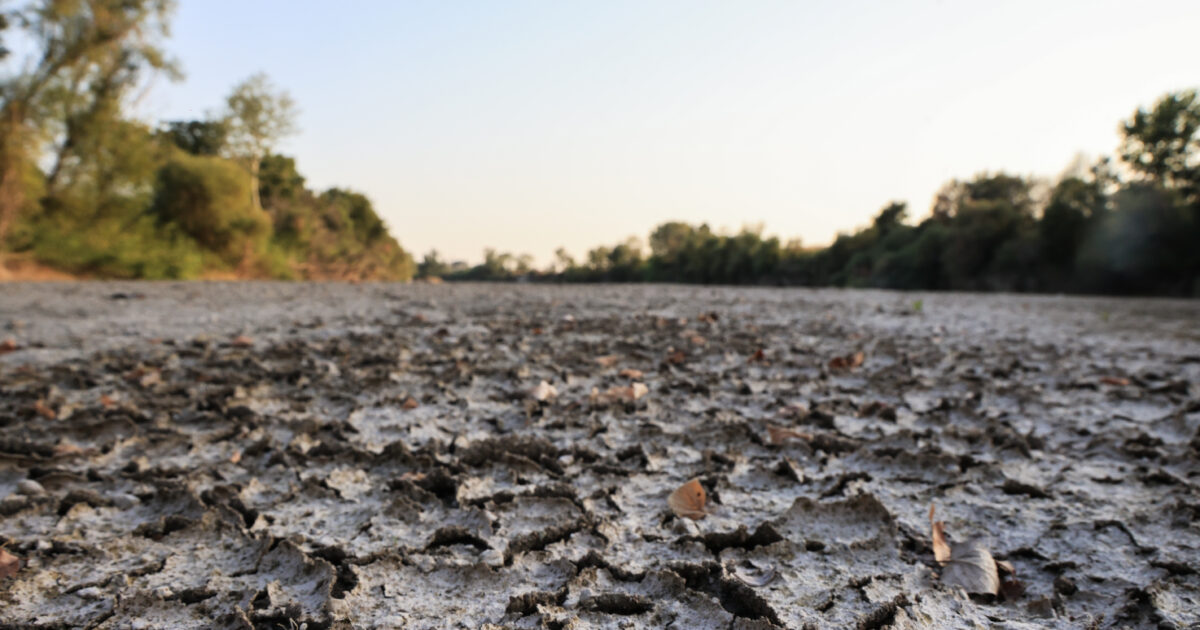Panagiotis Sabatakakis, a doctor of hydrogeology at the University of Bologna, a member of the International Hydrogeologian Association and the IGME of water resources director, speaks of a natural phenomenon. drought and explains the mechanism and water routes.
Drought is a natural phenomenon and it did not suddenly come one day to shake our tranquility. It was happening before. When we are talking about the climate, it is a different size: seeing it in the past geological time of hundreds of millions, it was never stable.
The drought phenomena in the recent geological time and after the man began to evaluate them either initially with observation or later with the scientific instruments, he found and constantly finding that rainfall from year to year are not and were not the same. In the past 40 years there has been a differentiation not so much in terms of Annual height of rainfall but in terms of intensity and Reduction of snowfall. Both of these factors act catalytically in the processes of supply of underground waters and surfaces: During a heavy rainfall the soils suffer erosion and degradation and the process of ‘dumping’ which supplies underground waters is not so effective. And the decrease in snowfall is a negative catalyst in the supply of underground waters, and in particular the large aquifer systems which are also strategic water supplies in the summer.
Opposite these physiographic/hydrological agents we have the water needs, which from 5 years to 5 years increase. The Relationship Availability of Water Resources/Needs in Our Water determine the degree of water scarcity In an area, in a country and even on an entire continent. But the needs are identified by different criteria and measures and this is the big issue. A few days ago, the general policies that the government intends to follow in relation to water resources management were announced. In this announcement, our country was presented in 19th place in terms of water scarcity.
The comment is that if we continue as consumers, as entrepreneurs, as a local government, not to take any water saving measures, that is, a decrease in waste, then we will soon win 1st place. Recall that in the EU We are the country with the highest consumption of irrigation water. We are at 1st place together with Italy in the cataclysm consumption of water water. Let us accept that soil conditions in the agricultural sector are more demanding, yes but how much? The distance from Spain and Italy to irrigation, countries that Greece resembles, is great. And it’s just enough to worry about that we don’t do something right. The discussions go to conferences, meetings, scientific workshops, etc. Around the imposed control and improvements of irrigation networks without moving anything. On the contrary, bureaucracy is magnified and the tables are filled with elements and wrong conclusions.
Several areas of our country today in “Red” for both irrigation and water supply needsif there were substantial managementwould not be in such conditions. Or they would still not require new projects to secure new water resources.
Therefore my personal appreciation and given that our country’s budgets have not been the best for 15 years, we should move primarily with a view to Reduce wasting. This will determine not only the volume of real needs but also where they are. Otherwise there is a risk of areas with long -awaited aquatic supply / demand deficit balance to deprive the necessary projects of either sorting or networks improvement. Unfortunately, in these procedures for evaluating needs for years, the logic has not lacked “write something more than the quantities the area needs to be comfortable …”. Examples are not missing as well as the elements that confirm it.
EU Directive 2000/60, which since 2003 has been the basic jurisdiction of water management in member states, unfortunately did not prove to be the drug for mismanagement. Needed and needed and the ‘internal’ reorganization of servicesscientific institutions involved in the management and scientific monitoring of our country’s hydrosyhydrates. And here we have to admit that we are left behind. Services without or with inappropriate staffing, scientific bodies with ever -declining staff.
Our country regardless of this year’s reduced year of rainfall has had to have been promoting a national strategic plan for the gradual for three decades. Creating a TRAINING AND NETWORK Infrastructure Small and medium -scale rather than a pharaonic type. Works which will concern both local hydrological and hydrogeological conditions on the one hand and the particularity of local needs (in terms of cultivation and soil conditions). These projects do not require much maturation time for the study and also do not require much construction time. Our country, of course, must eliminate its evil self in terms of bureaucracy. We cannot walk through practices e.g. Build a small and medium -sized water reservoir and the time of study, construction and utilization, exceeds 15 years.
Greece’s hydrological, hydrographic and hydrogeological conditions are ideal for promoting a more general program for 20 years for the Construction of multi -purpose reservoir reservoirs, By choosing the right hydrological areas and the real needs by promoting them in the future. Such planning requires political consensus and commitments, social understanding and scientific participation with validity. In other words, it requires the obvious that unfortunately in many stages our country did not prove that it had them. Let’s prove it at least now.
Source: RES-EIA
